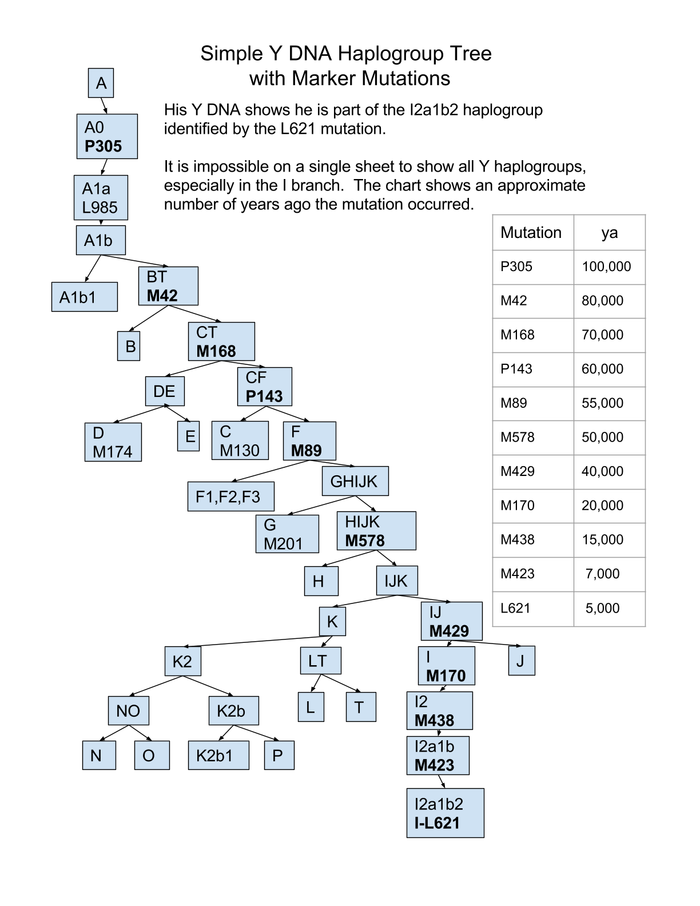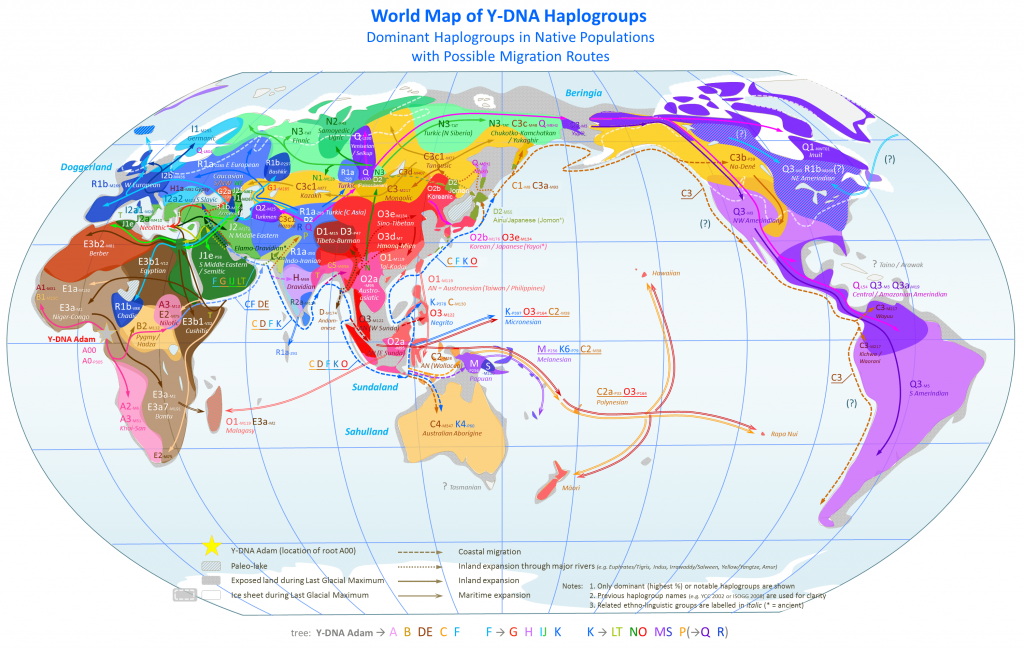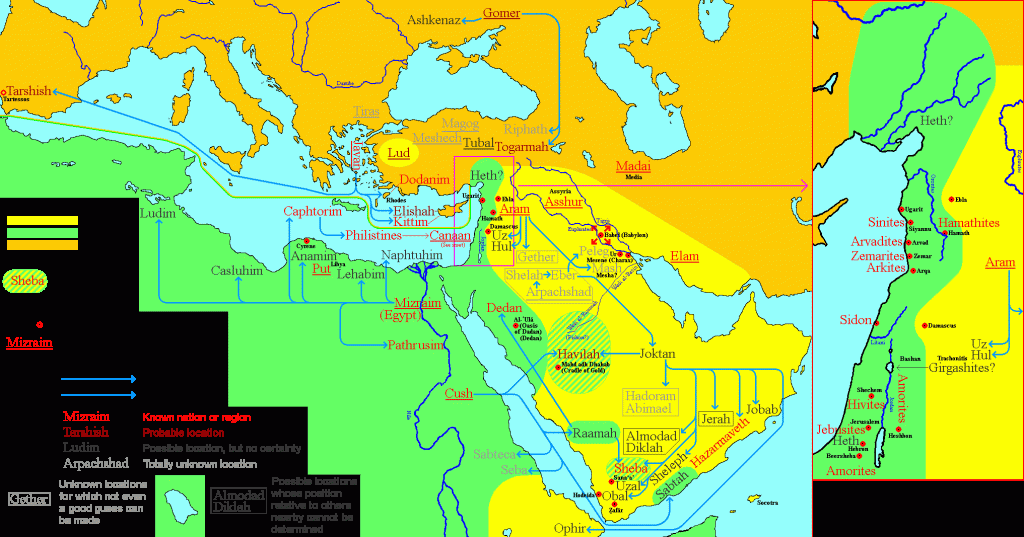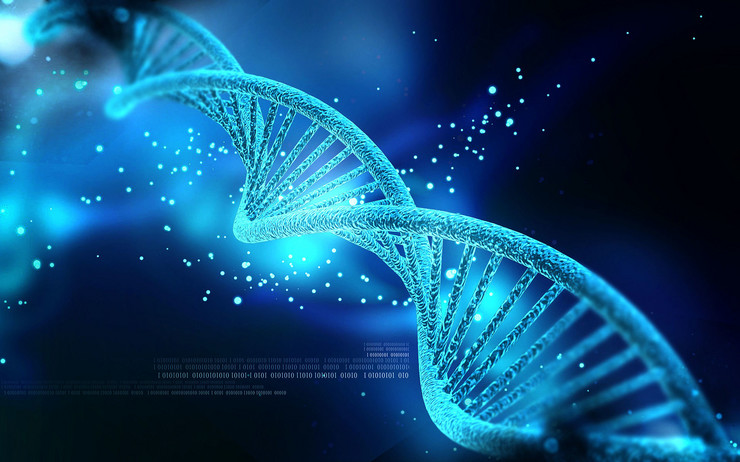Bible's Account of Origin
Unsurprisingly, most scientific evidence lately indicates the accuracy of the Bible’s account of origin. Specifically, recent genetics research shows that our ancestry leads to a common ancestor, called the “chromosomal Adam” and “mitochondrial Eve” in science.
In order to explain this phenomenon in more detail, we will recall a few facts.
There are organelles inside each cell. These are parts of the cell. The centerpiece of each cell is a nucleus that contains DNA material that is passed on from generation to generation. In addition to nuclei within the cell, mitochondria contain their DNA information. Mitochondria are cellular organelles (an organ at the cellular level analogous to an organism) and act as small power plants. They play a role in producing the energy necessary for the cell to function. When a male sex cell is coupled to a female sex cell, everything except the sperm nucleus is decomposed. In this way, we inherit the characteristics of the father and mother by gender, when it comes to central DNA from the nucleus. However, when it comes to mitochondrial DNA, we inherit it mainly from the mother.
With this in mind, we can draw many conclusions.
According to the Bible, Adam and Eve are the ancestors of all mankind. However, the Flood that occurred in 1656 since Creation wiped out the human population so that our most recent common ancestor is actually Noah (3167-2217 BC), that is, his three sons – Sim, Japheth, and Ham – with their wives.
What the Bible claims Science just Proves
How many Y chromosomes were on the Noah’s Ark? Answer: one. Yes, there were four men, but Noah passed his Y chromosome to each of his sons. Unless there were mutations (which is quite possible for a healthy and long-lived pre-melting generation), each of the sons carried the same Y chromosome. We do not know how many mutations happened before the Flood because of the fall into sin and the very culmination of the sin that caused the Flood. With the long life span of pre-patriarch patriarchs, we can reasonably assume that few mutations have occurred. The amount of mutations is unclear, but the Flood has deleted most of the traces (all in the case of the Y chromosome).
How Many Mitochondrial DNA Are in the Ark? Answer: Three. Yes, there were four women, but the Bible did not record that Noah’s wife had more children after the Flood (in this case, a daughter). Note the statement in Genesis 9:19: “Three of them were new sons, and from them came the people of the whole earth.” That is a clear indication that the New Woman no longer gave birth to children. We are left with three mitochondrial DNA lineages, according to three women of Noah’s three sons.
What did atheist science do with the research results found?
People who came to this knowledge said: “Using our empirical data to calibrate the mitochondrial DNA of a molecular clock would result in a mitochondrial Eve age of only 6500 years, which is incompatible with the known age of modern humans. This cannot be true because it does not agree with our (their) evolutionist timeframe, so we will just ignore it. “
Because they do not get the timing they were expecting, they will simply relativize all the research results, tapping into the old story of millions and millions of years.
Geneticist Dr. Nathainel Jeanson found that the results of the study coincided with a biblical timeframe, not evolutionary at all, because of the number of mutations that are small, and if evolution were right those differences would reach incredible numbers that absolutely do not exist. This geneticist compared the mitochondrial DNA of all humans on earth and found that there were only 77 differences. When you add to this all the timeframe for these differences, we can conclude that the biblical claims are true.
Facts should be prioritized despite whether we are comfortable or not. For once, we will be comfortable if we love the truth. “And ye shall know the truth, and the truth shall set you free.” (John 8:32)
Appendix

According to the Table of Genesis Chapter 10, the assumed migration took place approximately according to this model:
Shem (Sim): Haplogroup J belongs to the southern parts of the Middle East and Mesopotamia. Haplogroup I represents the descendants of Luds, Shem’s son, who settled in Europe and adopted the Indo-European languages much later, while the rest of Scheme’s descendants, who are quite identifiable, are part of haplogroup J (J-P209) and have remained in the Middle East .
Japheth: Most of Japheth’s descendants, represented by haplogroups from K to X, ended up in Europe, Asia, America, and the Pacific Islands through full-blooded haplogroups mostly represented by Caucasian and Mongoloid peoples. However, they also form a large part of the ancestors of the black Guinea and Melanesian peoples via haplogroups K and M. They are found even in Africa in genetically distinctive Chadians with haplogroup R1b (R-M343), who presumably migrated to Central Africa from Eurasia and accepted Afro -Asian languages. They are black, though most of the haplogroup R are white Europeans, including the original Indo-Europeans. This means that the Y chromosome does not determine race!
Ham: The descendants of Ham are represented by haplogroups A through H. Many of them (haplogroups A, B, and E) have remained in Africa, but some have not, including haplogroup C (Asia, America, Australia, and Pacific Islands), haplogroup D ( certain Asian populations), haplogroup G (small populations in the Caucasus, Middle East and Europe), and haplogroup H (India). Haplogroup F itself (conventionally called F *), not counting its “descendants”, GHIJK and HIJK (now considered her ancestors) and G and H, is almost non-existent and is sporadically found in Asia and Europe. Thus, although according to Genesis Chapter 10, Hamites are mostly tied to Africa, the evidence suggests that a number of Ham’s descendants are in a wider range.



